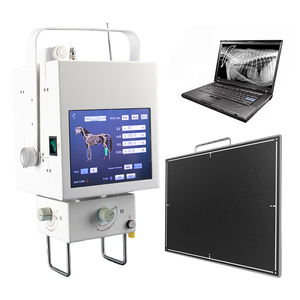Introduction to Digital X-Ray Sensors
Digital X-ray sensors are cutting-edge devices that have transformed the landscape of radiography. They serve as electronic detectors that replace traditional film in taking X-ray images, providing healthcare professionals with faster, clearer, and more reliable diagnostic results. The adoption of digital X-ray sensors has not only enhanced image acquisition but has also streamlined workflow in various medical and dental practices.
Types of Digital X-Ray Sensors
Understanding the different types of digital X-ray sensors is crucial for making informed decisions in healthcare settings. Here are the primary categories:
- Charge-Coupled Devices (CCD):
- Utilizes electronic sensors to capture images with high sensitivity.
- Known for excellent image quality and detail.
- Complementary Metal Oxide Semiconductors (CMOS):
- Offers lower power consumption and is typically less expensive compared to CCDs.
- Provides high-resolution images with rapid processing times.
- Film-Based Imaging Sensors:
- Combines traditional film with digital conversion for a hybrid approach.
- Allows for gradual transition for practices still accustomed to film.
Applications of Digital X-Ray Sensors
Digital X-ray sensors have widespread applications across various medical fields, demonstrating their versatility and importance:
- Dentistry:
- Used for detailed dental imaging, including cavity detection and root canal assessments.
- Facilitates real-time diagnostics, improving patient consultation quality.
- Orthopedics:
- Essential for diagnosing fractures, joint issues, and bone diseases.
- Supports treatment decision-making with high-resolution imaging.
- Radiology:
- Plays a critical role in routine examinations, such as chest X-rays and mammograms.
- Enhances disease detection and monitoring with precise imaging capabilities.
Advantages of Using Digital X-Ray Sensors
The shift from traditional film-based systems to digital X-ray sensors offers several key advantages, benefiting both healthcare providers and patients.
- Immediate Image Availability:
- Images can be viewed instantly, eliminating the waiting time associated with film development.
- Enhances the efficiency of diagnosis and treatment planning.
- Reduced Radiation Exposure:
- Digital X-ray sensors typically require lower doses of radiation compared to traditional methods.
- Enhances patient safety and comfort during X-ray procedures.
- Enhanced Image Quality:
- Produces higher resolution images with better contrast, aiding in more accurate diagnostics.
- Allows for digital enhancements, improving the overall diagnostic experience.
- Environmental Benefits:
- Eliminates the need for chemical processing associated with film, reducing environmental impact.
- Promotes a more sustainable approach to medical imaging.












































































































































































